Modern is a weird format. The spiritual successor of Extended, it has surpassed the old semi-Eternal format in popularity by leaps and bounds… but it’s still largely in the same boat. With FNM and big events like the StarCityGames Open Series tending to be primarily Standard, it’s hard for Modern to be more than a second-fiddle format in most peoples’ eyes. While there are “Modern specialists” prowling the daily events on Magic Online, the format generally falls off the average player’s radar except around the yearly Pro Tour, a handful of Grand Prix, and the Modern PTQ season.
For Modern fans everywhere, we’re now firmly in the middle of the latter of those, which means the amount of Modern-related content on strategy sites like this one has increased dramatically. That’s a good thing, because despite the massive number of cards in the format, it always seems like Modern is at risk of becoming stale.
A big part of that is because of the on-again, off-again competitive events in the format. With only brief windows during which Modern is relevant to most players throughout the year, it doesn’t get explored nearly as thoroughly as a format like Standard or even Legacy. The non-rotating nature of Modern means that many players simply pick a deck and stick with it as long as it’s “good enough” rather than trying to find something new.
In fact, the price of many cards in Modern also makes it so this is the only way many players can actually participate in the format at all. Sure, they might want to try out a new deck idea… but when they’ve already invested hundreds or even thousands of dollars into the fetchlands and other expensive staples that it takes to build a deck like Birthing Pod or Splinter Twin, it’s going to take a lot to get them to switch to something else.
Frankly, I’m guilty of this too. When I was testing for Grand Prix Minneapolis a month or so ago, I went in thinking about how I ought to tune the Naya deck I had been playing rather than thinking more broadly about what would be the best deck to play. Truthfully speaking, I think there’s something to be said for this approach. Modern is a huge format with a ton of different decks, and it can be difficult to learn not only the ins-and-outs of how your own deck operates but also how it matches up against the rest of the field. We see players like Patrick Dickmann and Sam Pardee repeatedly experiencing success in Modern while sticking to the same archetype in multiple tournaments across many months, which speaks to the importance of value of experience with how games play out with a particular kind of deck.
Well, there’s no deck that I have as much experience with as this one:
Creatures (27)
- 1 Birds of Paradise
- 4 Tarmogoyf
- 4 Wild Nacatl
- 4 Noble Hierarch
- 4 Knight of the Reliquary
- 4 Qasali Pridemage
- 4 Scavenging Ooze
- 2 Loxodon Smiter
Planeswalkers (3)
Lands (22)
Spells (8)

This deck has quite a few of my favorite cards in Magic, including my single favorite card, Knight of the Reliquary. I had reasonable results with Naya Zoo at Pro Tour Born of the Gods and Grand Prix Richmond, but wanted to make some changes to the deck before bringing it to Grand Prix Minneapolis.
The biggest of these changes was going up to four copies of Qasali Pridemage in my maindeck. I think Pridemage is one of the most underappreciated cards in all of Magic because it provides a ton of utility along with a totally reasonable body for its cost. It isn’t the most efficient creature around, nor is it the flashiest, but it is a great tool that gives you an answer to wide variety of possible problems – including many you never even thought about running into when you put it into your deck.
The way people have built decks has changed a lot over the years. Do you know what the most popular card among Top 8 decks was for quite a while early in the Pro Tour’s lifetime? Disenchant. I remember being a kid playing at two-time Top 8 finisher and PT champion Shawn “Hammer” Regnier’s store in Manchester, New Hampshire many years ago when he referred to a deck as “honest.” What he meant by that, essentially, was that it was a deck that had the tools to deal with any threats his opponent might play – meaning artifacts and enchantments in addition to creatures. There was a very risk-averse mindset in deckbuilding – “I don’t want to lose to Icy Manipulator and Winter Orb, so I have to play Disenchant” and “I don’t want to lose to Millstone decks, so I have to play Feldon’s Cane” – which led to decks being much less focused and generally less efficient.
These days, the opposite extreme is often true. People often build decks with such single-minded focus that they can easily lose to a single card that they lack any way to beat. This is especially true of the way a lot of people build aggressive decks, which they pack full of nothing but the most efficient creatures and burn spells possible. While such decks can be effective if they don’t run into problems, they can also often just roll over and die to cards that they have no way to answer.

Qasali Pridemage is the Disenchant for the modern-day honest man. Not only is Modern a huge format filled with any number of fringe decks you might want an out against, but it’s also heavily defined by decks that feature artifacts and enchantments quite heavily. Three of the most prominent and popular decks in the format – if not the top three decks – are Affinity, Birthing Pod, and Splinter Twin. One of those decks is nothing but a pile of artifacts, and the other two are each named after an artifact and an enchantment, respectively. You can see why someone might be in the market for a Disenchant – especially one that can attack.
Here’s just a short list of things I’ve killed with Qasali Pridemage recently:
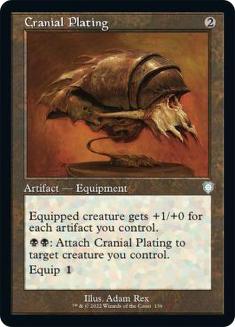
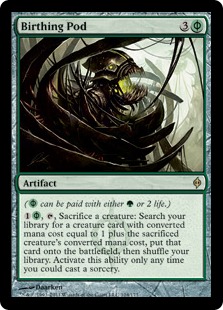
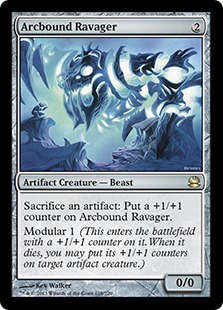

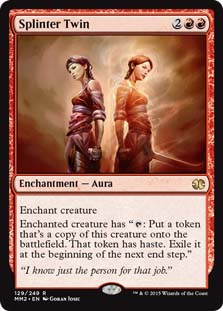
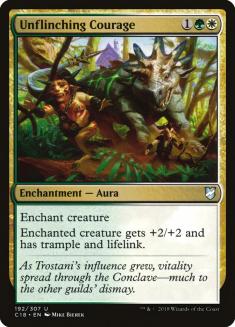
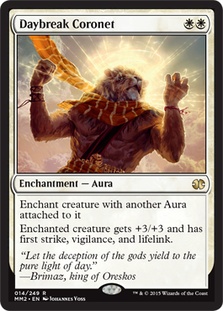
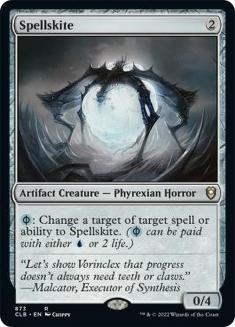
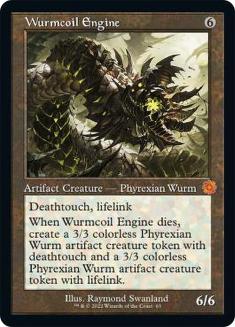
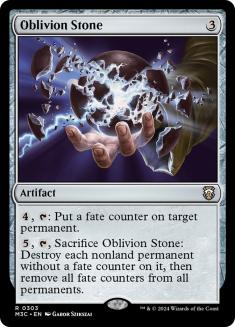
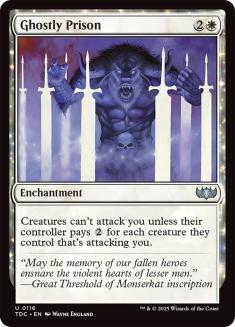
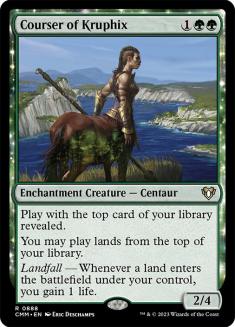
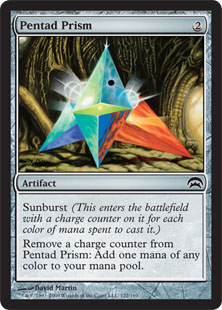
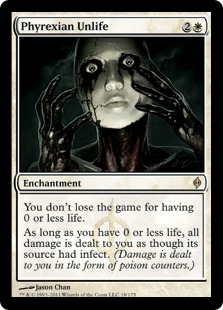
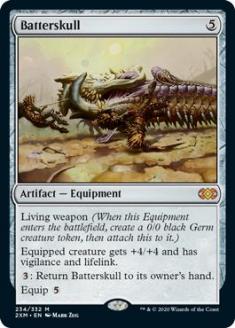
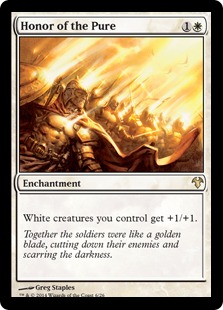
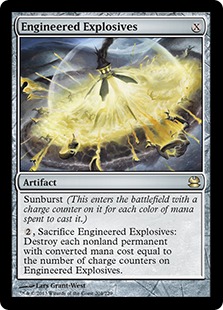
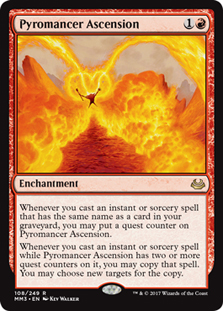
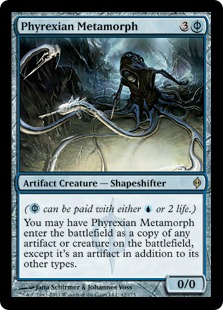
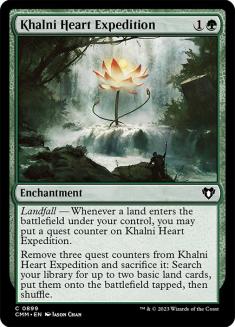
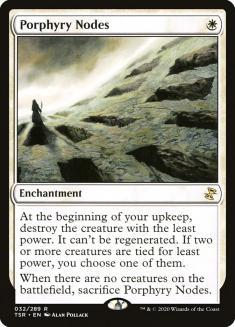
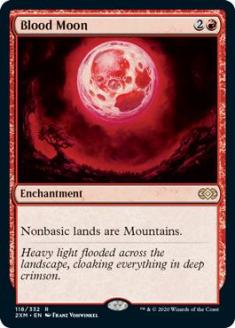
Okay, so maybe it isn’t a short list… but that’s kind of the point. There are a lot of powerful artifacts and enchantments in the format that Pridemage can deal with that might otherwise threaten to end the game, sometimes on the spot. This cat can easily make the difference between victory and defeat.
The best part is that Pridemage does all this without cramping your attacking style. The problem with the Disenchant-maindecking of old is that it diluted your core strategy with purely-reactive cards. That’s not true of Pridemage. Not only is a 2/2 for two a serviceable body, but Exalted is actually a very meaningful ability, especially when it adds up. Kitchen Finks is much less of a problem when you can send exalted Wild Nacatls into it, and even Wall of Roots can’t keep a good cat down when you have a Hierarch alongside your Pridemage. Tarmogoyf staredowns are a real thing in Modern, but Exalted gives you the tools to break through.
I could go on about Pridemage for a long while, but I imagine some of you are getting a bit tired of me waxing poetic about the cat and want me to move on. The other big change from my old versions to this one is the move away from Domri Rade to Chandra, Pyromaster. The reason for that change is pretty simple – the format shifted in such a way that I no longer believe Domri is particularly good. Back when I was first playing Domri, various flavors of Jund and UWR were the most popular decks, and those were matchups in which Domri shined. His fight ability was especially powerful against Jund’s Deathrite Shamans and Dark Confidants, and UWR decks were ill-equipped to deal with a steady stream of creatures coming off of the +1.
Now, though, the top decks are better set up against Domri. While Birthing Pod is full of creatures, many of them are poor candidates for Domri to brawl, like Voice of Resurgence and Kitchen Finks. Trying to fight against Affinity is just too slow, or worse yet doomed to failure when Ravager can pick who is going to win, and Splinter Twin just doesn’t care about marginal advantages accumulated over several turns when it can combo kill you and plays all of its creatures at instant speed.
I still like having solid non-creature threats, however, so I decided to try Chandra and was very impressed. Not only is Chandra a more reliable card advantage machine than Domri, but her +1 ability is quite relevant, both for picking off one-toughness creatures and for forcing damage past blockers. Chandra had already proven herself to be valuable in Jund, but I think she’s even better here since a deck with cards like Wild Nacatl and Knight of the Reliquary that can hit fast and hard is better-positioned to take advantage of the can’t-block effects to end the game. She also plays very well under Blood Moon, which is a key element of this deck’s sideboard strategy in quite a few matchups.
The great thing about Blood Moon is that it has such broad applications in terms of the decks you bring it in against. I’ve Blood Moon’d everything from Tron to Scapeshift to Ad Nauseum to Boggles. Without Blood Moon, you have to actually try to win games where your opponents get to play their broken cards and combos – why would you want to do that? Both three-cost enchantments in the sideboard – Blood Moon and Choke – have the express goal of keeping your opponent from actually getting to play the game. But frankly, they deserve it because they’re playing with silly lands like Urza’s Tower or Island.
I don’t think this deck is the be-all-and-end-all of Modern, by any means, but I think it’s a solid deck that has a lot of tools to compete in a big field. I ended up 12-3 at GP Minneapolis with a nearly-identical build – just a few different sideboard cards and one maindeck change – and beat a pretty broad spectrum of decks in the format. If you’re the kind of person who wants to play good, honest Magic, this might be the deck for you.
Remember what I said at the beginning about the cycle of Modern and people sticking to decks? Well, even if I’ve been doing it myself lately because I haven’t had a lot of events to play in that would lead me to do otherwise, I’ve been doing a lot of thinking about other ways to approach the format. I wasn’t looking to reinvent the wheel and make something totally new, per se, but rather to use the knowledge I’d gained from my time playing Naya and apply it to similar decks with slightly difference angles of attack.
Remember this deck?
Creatures (22)
- 4 Tarmogoyf
- 3 Doran, the Siege Tower
- 3 Treefolk Harbinger
- 4 Noble Hierarch
- 4 Knight of the Reliquary
- 4 Qasali Pridemage
Planeswalkers (2)
Lands (23)
Spells (13)

This was my Doran list from GP Lincoln a few years ago that I piloted to a Top 16 finish in that tournament. Obviously Modern has shifted quite a bit since then, with new sets and new decks, but thinking about Modern and Pridemage led me back to thinking about this deck.
I actually had a conversation recently with a friend who was wondering why Modern Jund and B/G decks don’t play Birds of Paradise to accelerate into Liliana of the Veil since she’s so powerful on turn two, and I pointed out that those decks are generally built for attrition and can’t afford to play a resource-exchange game with too many mana sources in their decks.
One of the surprising things about this deck to a lot of people was that I didn’t play Dark Confidant, and my reasoning was very much that I was looking to play a more aggressive game rather than one based on attrition. I might be a crazy person for this opinion, but I’m not very excited about playing Dark Confidant in Modern right now. There are so many ways for so many decks to deal with Bob that it can be hard to actually get any value from him effectively. I have to wonder whether we’re better off playing something like Lingering Souls to get our “value,” which also doubles as an incredibly powerful tool to put the brakes on Affinity.
I haven’t actually had a chance to flesh out these ideas all that much, but I’m thinking of something like this:
Creatures (19)
Planeswalkers (3)
Lands (23)
Spells (15)

Again, totally untried and untested – just based on the theory of playing a proactive deck with widely-applicable disruptive tools. This deck sacrifices Lightning Bolt and Wild Nacatl for discard, Liliana, and black removal. Much like my Doran deck from Lincoln, it eschews Dark Confidant, but Lingering Souls fills that role to some extent and also becomes a powerful stand-alone threat with Gavony Township or Vault of the Archangel, either of which can be searched up by Knight of the Reliquary.
I’m certainly going to be experimenting with something like this the next time I play Modern – I think it has a lot of the draw of Naya but feels like it might be able to shore up some of the problem matchups. But most importantly, I still get to play mana creatures, Knight of the Reliquary, and Qasali Pridemage, because that’s what Modern is really all about, right?
What do you think? Are there any tweaks on old Modern lists that you think might have potential?
